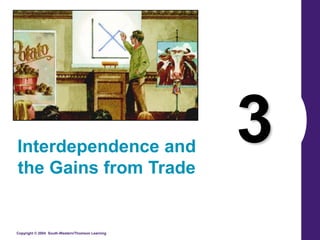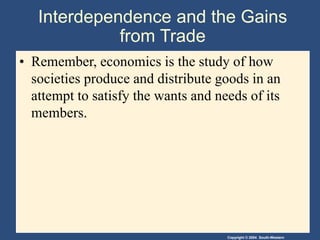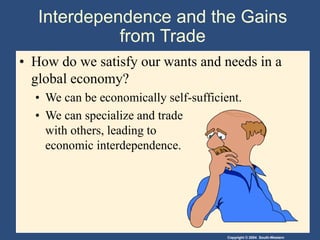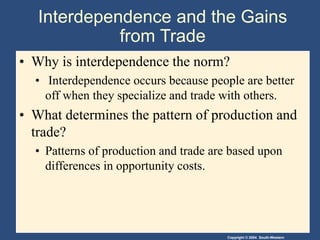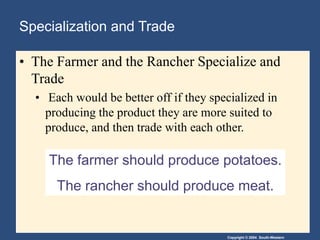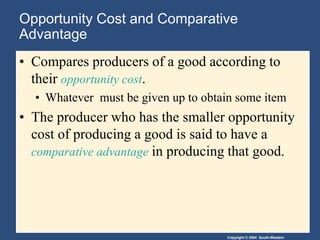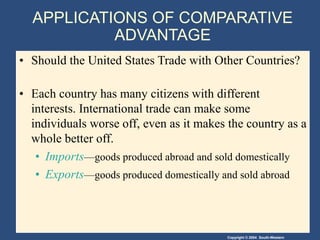The document discusses the concept of comparative advantage and how specialization and trade according to comparative advantage benefits individuals and societies. It explains that while one party may have an absolute advantage in producing both goods, comparative advantage looks at opportunity cost and determines that parties are better off specializing in the good where they have a lower opportunity cost. This allows for gains from trade as parties produce according to their comparative advantage and trade with one another.
